Daidaiiro Orange - Eye Candy Pigments
Code: 7418/000005 7418/000025 Choose variantProduct detailed description
Daidaiiro Orange is a vibrant orange pigment from the Glow Series line, providing a striking, long-lasting glow. Just expose it to light to charge, allowing it to glow for 8-10 hours in complete darkness—ideal for artists seeking a lasting, impressive effect.
Our Glow in the Dark pigments are denser than typical pigments, meaning a smaller jar but extended glow time. Mixing with other pigments creates unique shades but may reduce glow duration. Daidaiiro Orange is perfect for epoxy, acrylics, and jewelry, adding an unforgettable look.
This pigment suits a wide range of DIY projects—from slime and bath bombs to candles and cosmetics. With Daidaiiro Orange, achieve a dazzling glow that captures attention in any light.
Technical parameters and information
Ingredients and Particle Size
- Particle size : 30-50 μm
- Ingredients : Strontium Aluminate, Polyurethane-11, Red 28, Yellow 5
- Heat Threshold:752 °F - 1112 °F (400 °C - 600 °C)
Additional Data
- Product Type : Mica
- Vegan : Yes
- Soaps : Yes
- Epoxy Resin : Yes
- Acrylic : Yes
- FDA-Permitted for External Use : Yes
- FDA-Permitted for Eye Area Use : No
- FDA-Permitted for General (Including Lips) Use : No
- FDA-Permitted for Bath Bombs Use : No
How to Mix Pigments Properly – Tips and Tricks
Tip how to mix NEON and Glow In the Dark pigments in resin
Neon and Glow In the Dark pigments are very fine and mixing in resin is very difficult. Here is a sample procedure on how to proceed.
- Put the required amount of pigment in a clean container
- Add 91+% Isopropyl alcohol and mix the pigment
- Add your favorite epoxy resin and mix thoroughly
Mixing with epoxy resin
The most common question we receive is: “How much pigment per liter of epoxy?” This is a very valid question, but unfortunately, there is no definitive answer due to the various types of applications and variations.
- Therefore, we recommend 1-2 grams per 1000 ml, and add more as needed.
For example: Are you aiming for an opaque or transparent look? Lighter colors may require more pigment to achieve the desired shade.
Why micron sizes matter
Please be aware of the pigment’s micron size. The larger the micron, the larger the particle. Typical pigments have an average particle size of 10-60 μm. Note that larger micron-sized pigments will likely have a heavier density, causing the pigment to sink faster in fresh epoxy, such as in deep pours. For example, our Icicle or 14k Nugget Gold pigments have a size of 200-700 μm and will likely sink faster in fresh epoxy. To prevent sinking, let the epoxy settle a bit, or return to your project and “stir” it again.
How to Use Pigments for Soap Making
Pigments are often used to color soaps, whether using the cold process or hot process methods. Choosing the right pigment and optimal ratio is key to achieving an even and vibrant color without altering the soap’s texture. Pigments allow for a wide range of shades, from subtle to intense, with easy adjustment of the amount depending on your needs.
To achieve perfect results, it’s important to follow the correct ratios. Using too much pigment can change the texture of the soap or cause excessive coloring during use. The following recommendations provide a starting point for precise pigment mixing, with the option to adjust the pigment amount as needed.
Recommended Mixing Ratios
- Cold process: Use 2 teaspoons of pigment per 1 lb (450 g) of oils.
- Hot process: Use ½ teaspoon of pigment per 1 lb (450 g) of melt-and-pour soap base.
Following these ratios will give you vibrant colors and even pigment distribution in your soap. Pigments are an excellent choice for producing naturally colored soaps without affecting the structure or quality of the final product.
This method is perfect for those who want to create personalized soaps with a professional look and long-lasting color.
How to Use Pigments for Automotive – Ratios and Tips
DO NOT USE! Neon pigments are not recommended for automotive use because they have low UV resistance. This means that when exposed to sunlight for extended periods, the pigments may fade or lose their vibrancy over time. UV rays can cause the colors to deteriorate, which is why these pigments are best used in applications that are not subject to prolonged sunlight exposure.
How to Use Pigments with Acrylic Paints – Ratios and Process
Pigments are widely used to create colorful effects in acrylic pouring. Proper pigment mixing with acrylic paints ensures a smooth and even result without clumps or bubbles. When pouring acrylic, it’s crucial to follow the right steps for preparing the pouring medium, dissolving the pigments, and blending them with the medium. This process will give you the perfect color and consistency for your creative projects.
Recommended Process for Mixing Pigments with Acrylic Paints
Step 1: Preparing the Pouring Medium
- Mix 3 partsBehr8300 Deep Base interior/exterior Hi-Gloss Enamel with 1 partJOSONJA Polyurethane Water-Based Gloss Varnish.
- Stir gently to minimize bubbles. Ensure the paint and varnish are completely mixed.
Step 2: Dissolving Pigments in the Medium
- Pour ½ to 1 teaspoon of JOSONJA Gloss Varnish into a container.
- Add around 1 teaspoon of pigment (or a bit more) and stir until the pigment dissolves completely, making sure to eliminate any clumps.
Step 3: Combining the Pouring Medium and Dissolved Pigments
- Add 3 tablespoons of the pouring medium to the dissolved pigments.
- Mix thoroughly, folding slowly rather than whipping to minimize air bubbles.
Step 4: Adjusting Consistency
- If the mixture is too thick: Add a small amount of JOSONJA and stir until the desired consistency is reached.
- If the mixture is too thin: Add a small amount of Behr8300 and stir until you achieve the correct consistency.
This process will ensure a consistent color and smooth surface, free of air bubbles, which is essential for successful acrylic pouring.
Additional parameters
| Category: | Metallic pigments that glow in the dark |
|---|---|
| EAN: | Choose variant |
| Particle Size [μm]: | 30-50 |

Daishin Yellow is a yellow based bright yellow green pigment and part of our Glow Series line. Our popular mica powder is ideal for DIY craft use, such as, epoxy,...
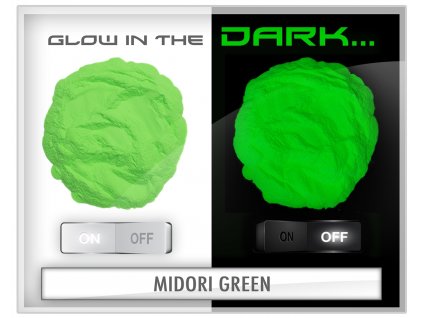
Bright green glow pigment perfect for epoxy, acrylics, jewelry, slime, and decor. Charges with light, glows for 8-10 hours.
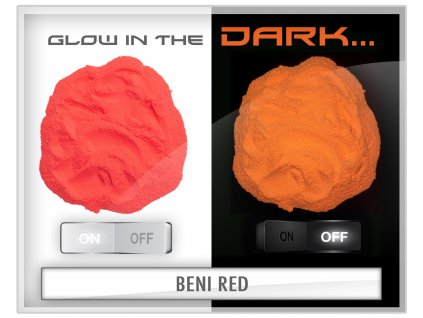
Red glowing pigment with an 8-10 hour glow. Perfect for resin, acrylics, jewelry, slime, and other nighttime projects.
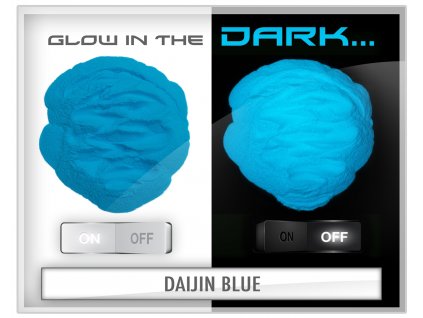
Bright blue glow-in-the-dark pigment. Charges with light, perfect for epoxy, acrylics, jewelry, slime, and more lasting creative projects.

Bright pink pigment from the Glow Series, glowing for 8-10 hours after light exposure. Perfect for resin, acrylics, candles, and cosmetics.

Bright orange glow-in-the-dark pigment with up to 10 hours of shine. Perfect for resin, acrylics, jewelry, slime, and more glowing projects.

Intense purple glow-in-the-dark pigment. Charges with light, perfect for epoxy, acrylics, jewelry, slime, and more lasting creative projects.
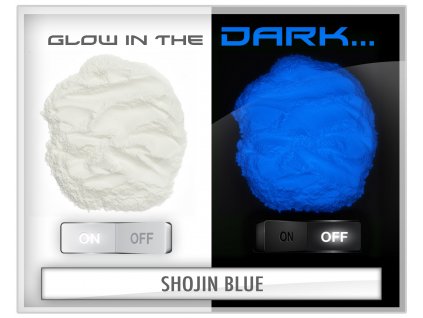
Bright blue, white-based glow pigment ideal for epoxy, acrylics, jewelry, slime, candles, and decor. Charges with light, glows for up to 8-10 hours.
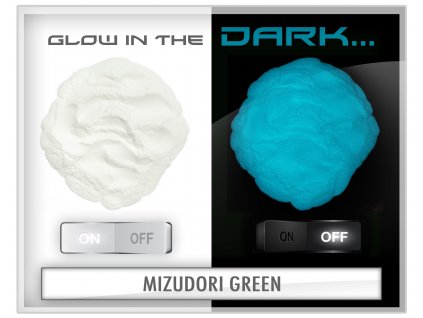
Bright blue-green glowing pigment with long-lasting luminosity. Perfect for resin, acrylics, jewelry, slime, and more night-time projects.
Be the first who will post an article to this item!
Be the first who will post an article to this item!

